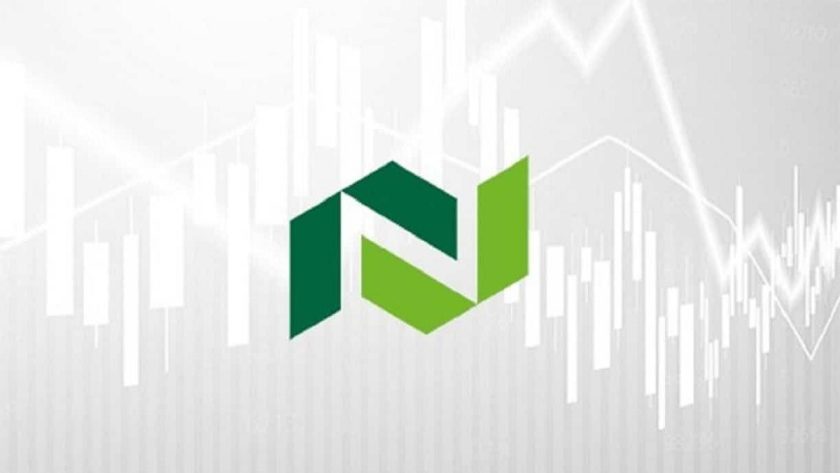Nigerian Exchange Stages Compelling Performance, Rides on Historic Highs
The Nigerian Exchange (NGX) has staged one of its most compelling performances in recent history, with the All-Share Index (ASI) hitting 121,989.67 points, comfortably surpassing the previous milestone of 121,708.04 points and narrowly trailing the 52-week high of 122,055.70 points.
This surge is not merely an aberration in a volatile market—it is a continuation of an upward momentum that reflects a confluence of improved investor sentiment, macroeconomic recalibration, and sectoral strength. To appreciate the scale of the current performance, one must situate it within the 16–17-year historical cycle of the Nigerian equity market.
The last time such euphoria gripped the NGX was during the pre-global financial crisis bull run of 2007-2008, when the ASI crossed the 66,000 mark—then a record high. That exuberance, however, was followed by a sharp correction amid global turmoil.
Fast forward to 2025, and the market has not only recovered those losses but more than doubled them. The sustained resilience in the past two years has not been a product of speculative froth but rather a sign of evolving maturity and increasing depth in the Nigerian capital market. Key drivers of the surge include
Macroeconomic Stabilization: Amid rising global interest rates and energy price volatility, Nigeria’s macroeconomic landscape has shown signs of stabilization. Key monetary policy tools have been strategically deployed to tame inflation, stabilise the naira, and create a more predictable environment for investment.
The Central Bank’s tightened stance, while controversial, has managed to calm the storm and instill confidence among domestic and foreign investors.
Corporate Earnings and Valuations: A notable rise in corporate earnings—particularly within the banking, telecommunications, consumer goods, and oil & gas sectors—has provided solid fundamental support for equity prices. With price-to-earnings ratios still modest by emerging market standards, the NGX remains attractive to value-seeking investors.
Renewed Domestic Participation: The growing participation of institutional investors such as pension funds, mutual funds, and sovereign wealth entities has created a stable demand floor. Additionally, digital investment platforms have democratized access to stocks, encouraging more retail involvement—an essential pillar of market resilience.
Reforms and Policy Alignment: Government-led reforms in the power sector, oil deregulation, and capital market governance have begun to yield dividends. The restructuring of state-owned enterprises and renewed commitment to privatization has opened up fresh capital inflows and catalyzed a re-rating of key industry players.
Sectoral Performance:
When benchmarked against prior cycles, the current momentum is broad-based rather than narrowly concentrated. Here’s how major sectoral indices compare:
Banking Sector Index: Historically one of the most volatile, it has shown remarkable strength this year, bolstered by rising interest income and enhanced capital adequacy. Compared to the post-2008 and 2016 recovery phases, 2025 has seen the most consistent quarterly growth in over a decade.
Consumer Goods: Unlike in past cycles when this segment underperformed due to FX instability, 2025 has marked a renaissance driven by improved supply chains and increased consumer spending. The sector index has risen by over 40% YTD, nearly double its 10-year average.
Oil & Gas: Despite global energy transition pressures, the sector has leveraged higher crude prices and new domestic refining capacity (notably from the Dangote Refinery) to deliver robust returns. The oil index now trades near a 15-year high.
ICT and Telecommunications: The standout performer of the digital age, this sector has continued its meteoric rise. Since MTN Nigeria’s listing in 2019, the index has delivered cumulative returns that exceed 200%, showing no signs of deceleration in 2025 as data consumption and fintech growth remain exponential.
Industrial Goods and Real Estate: While more cyclical, these sectors have rebounded strongly, supported by infrastructure investment and favourable demographics.
What Differentiates 2025?
The current market momentum is distinguished by three strategic shifts:
Structural Resilience: Unlike prior cycles where external shocks triggered swift downturns, today’s market shows greater insulation from global volatility due to diversified investor profiles and fiscal discipline.
Sustainable Growth Narrative: The rally is underpinned by real earnings growth, strategic policy alignment, and reform momentum—not just speculative excess.
Broader Participation: Increased transparency, digitisation, and investor education have broadened the market base, reducing volatility and enhancing price discovery.
The Nigerian equity market’s current performance is not merely an echo of past cycles—it is a potential inflection point signaling a new era of sustained growth.
The ASI’s march toward, and likely beyond, the 122,000 threshold reflects more than a technical milestone; it underscores the possibility that the NGX is transitioning from a historically volatile frontier market into a maturing emerging market hub.
For long-term investors, both domestic and international, 2025 offers not just opportunity but vindication for those who believed in the Nigerian growth story through its toughest cycles. CBN Requests Recapitalisation Plans From Banks Amid Regulatory Overhaul

